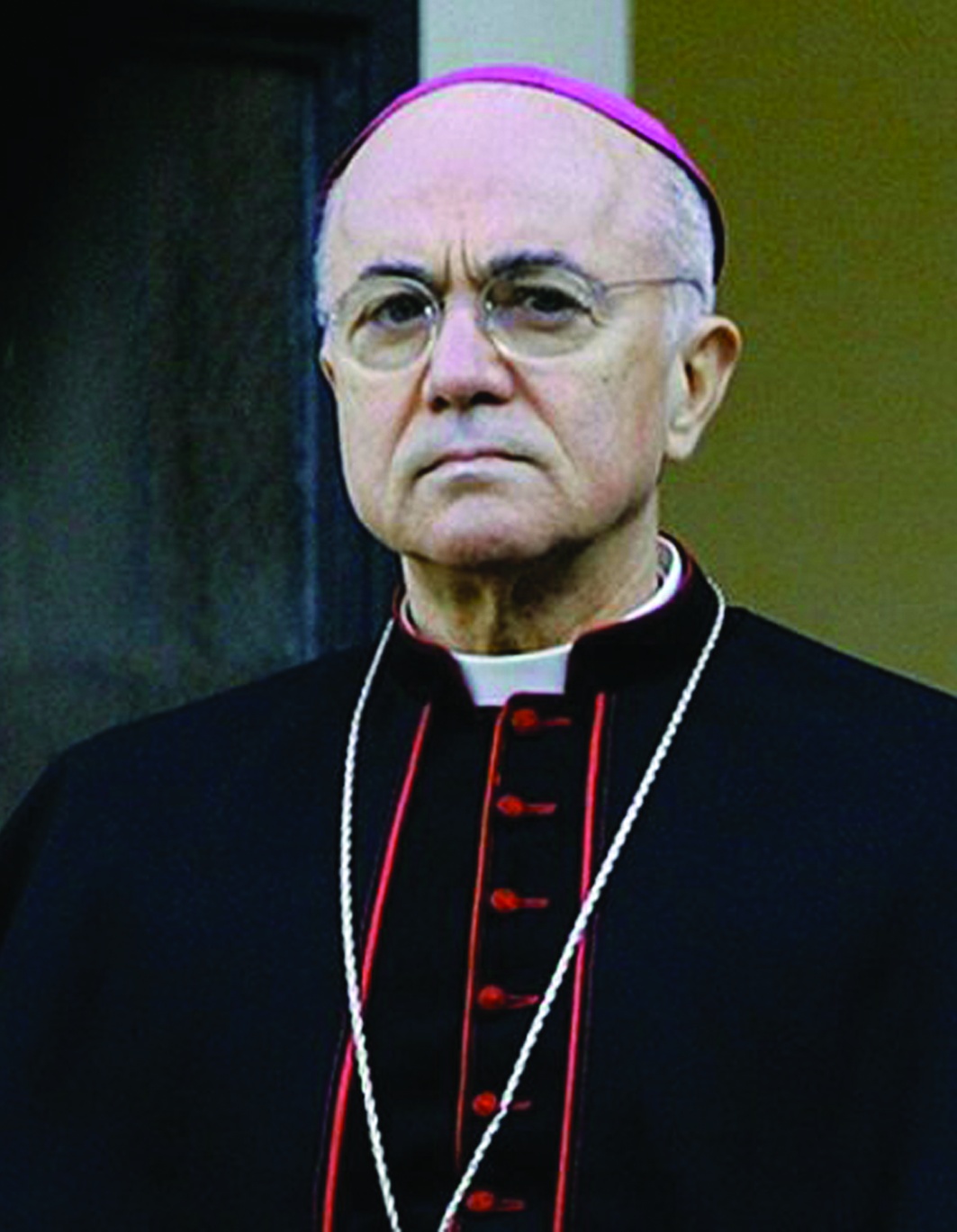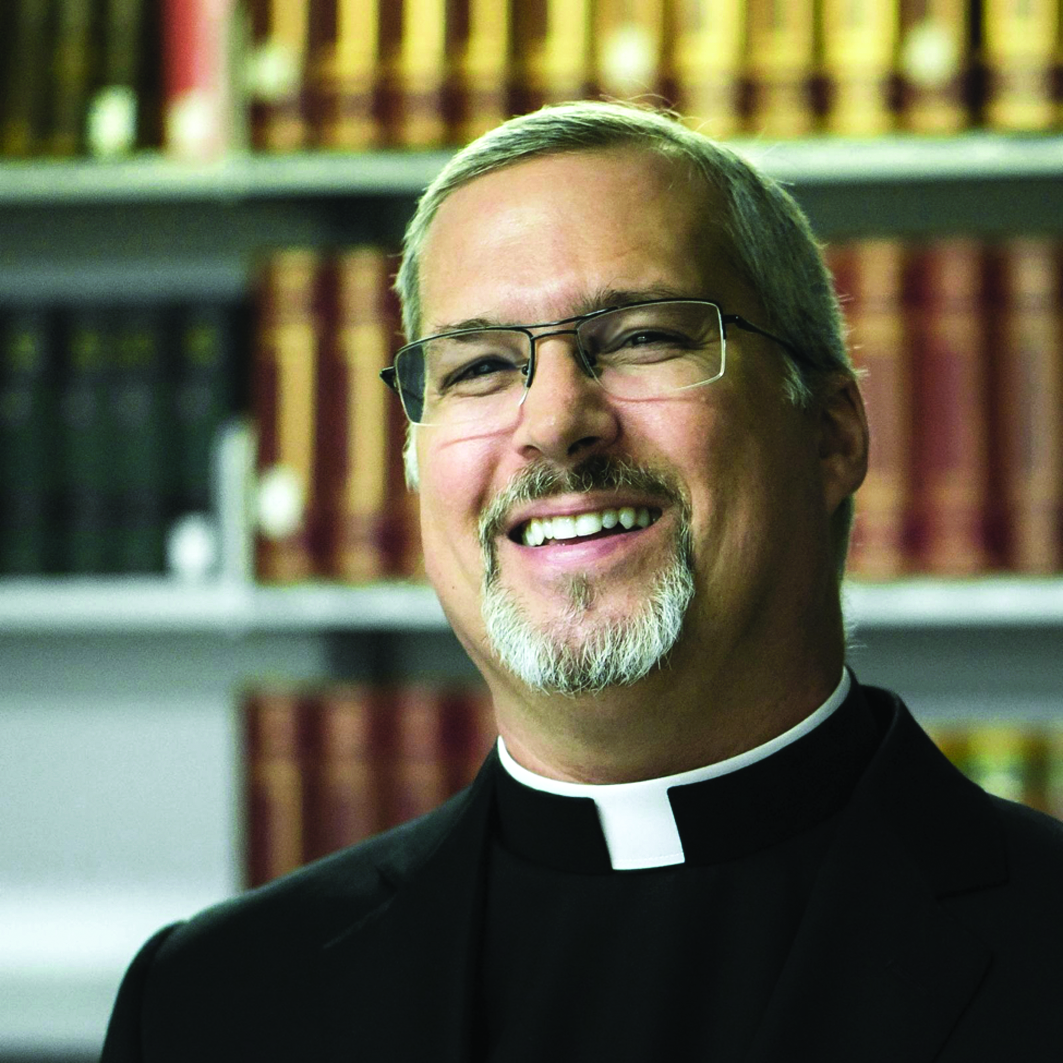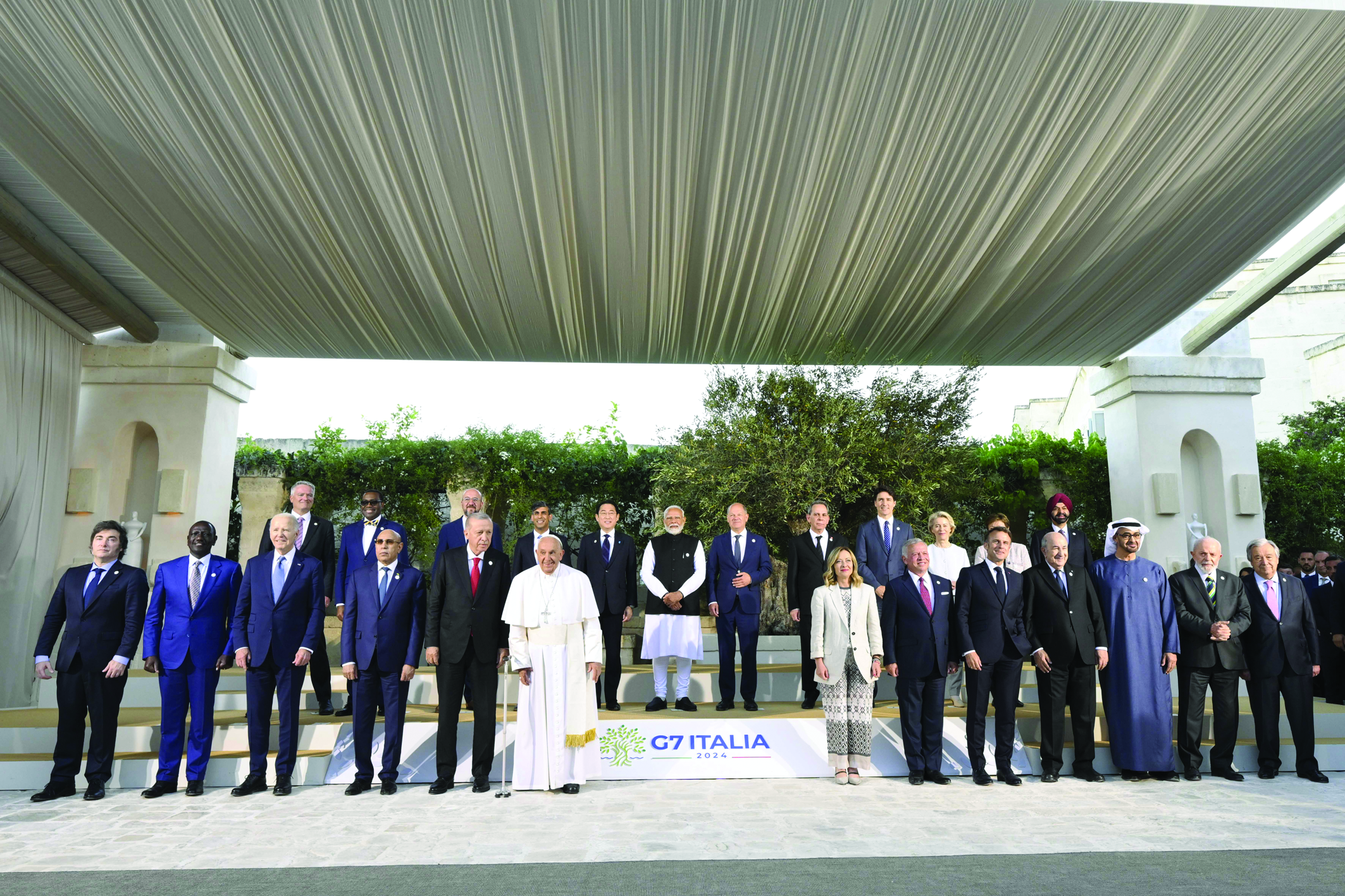
Pope Francis looks out the window of the papal library in the Apostolic Palace onto an empty St. Peter’s Square on April 13, 2020, Easter Monday, after reciting the Regina Coeli prayer via livestream. (CNS photo/Vatican Media)
Rome in a time of virus, everything closed…
By Christina Deardurff
The Catholic Church during her 2,000 years of history has seen every conceivable human event, from the glorious to the tragic. We can take comfort in this fact, as the entire world faces a pandemic caused by the Novel Coronavirus of 2019 — novel for us in our lifetimes, for many reasons beyond the newness of the virus itself — and yet, an experience of fear, isolation, even illness and death, that is as old as humanity itself.
The face of COVID 19 itself keeps changing: opinions about its infection and mortality rates, methods of transmission and how to retard them, social restraints and their true effectiveness, even protocols for treat- ment as medical professionals gain more experience — these are all evolving almost by the day.
Yet the Church, as Mater and Magistra, continues to care for her children in every way possible, adapting, as is part of her genius, to every circumstance of life. Somemight occasionally add, “clumsily,”but that is because she has a human element.
Still, the Church, being in the world but not of the world, continues to attend to “the one thing necessary”: our life in Christ.
St. Corona, pray for us

St. Corona, by the Master of Palazzo Venezia.
The pandemic caused by the coronavirus has boosted interest in St. Corona, who is widely venerated as the saint to turn to in times of pestilence and violent storms in northern Italy, Austria and southern Germany, where St. Corona churches and chapels abound and there are several St. Corona pilgrimages.
St. Corona was a 16-year-old Christian who was martyred for her faith in Syria in the second century. It is told that she stood up publicly for a Roman soldier who was being tortured because he had converted to Christianity. She was tied to two palm trunks that had been bent to the ground and when they whipped back up her body was torn to pieces. Her feast day is May 14.
St. Corona’s main relics are in the Basilica of Sts. Victor and Corona in Feltre, a hill town in the province of Belluno in the Veneto region in northern Italy, one of the first regions to be cordoned off due to the coronavirus pandemic. St. Corona is the patron saint of Belluno-Feltre.
The Holy Roman Emperor Otto III (996-1002) took her relics to Aachen in 997, where they were kept in a lead coffin close to the altar. In 1910, the coffin was replaced by a golden reliquary and moved to the cathedral treasury.
The reliquary has now been brought out of the treasury to be cleaned so that it can be exhibited. The relics are in a special sealed and tamper-proof container in the shrine. Christa Pongratz-Lippitt
The Lord Is With Us In This Storm
By Christina Deardurff

The Barque of Peter, mosaic in St. Peter’s Basilica from a painting by Giovanni Lanfranco
Pope Francis imparted a special Urbi et Orbi (“To the city and the world”) blessing to all of humanity on Friday, March 27, from the steps of St. Peter’s Basilica.
Usually reserved for Christmas Day and Easter Sunday, this extraordinary blessing was given in keeping with the gravity of the current global situation caused by the spread of COVID-19.
Standing in a deserted St. Peter’s Square with a steady rain falling, the Pope prayed for the world at this critical juncture in the presence of two ancient images: the icon of Mary Salus Populi Romani – usually housed in the Basilica of St. Mary Major – and the miraculous crucifix kept in the Church of San Marcello on the city’s Via del Corso.
Most importantly, the Pope exposed the Blessed Sacrament for adoration and imparted his Apostolic Blessing, offering everyone the opportunity to receive a plenary indulgence.
The Apostolic Penitentiary loosened the usual requirements to go to confession and receive the Eucharist, due to impossibility for people who are on lockdowns and quarantines.
Public Mass Resumes in First Us Diocese
“We are overlooking those who are dead interiorly”
The bishop of Las Cruces, New Mexico, became the first U.S. bishop known to have lifted a diocesan ban on the public celebration of Mass and sacramental ministry as long as priests follow state-ordered health precautions.
“In the events of these days and weeks the Lord is calling us out our comfort zone, he is calling us to seek new ways to reach the people. In addition to this mission with which we are entrusted, we also have the mission to keep people safe. The two must be equally pursued,” Bishop Peter Baldacchino said in an April 15 letter.
Baldacchino said he disagreed with New Mexico’s recent excluding of churches as “essential services.”
“It seems to me that while we run a daily count of the physical deaths we are overlooking those who are dead interiorly,” he said.
Guidelines limit Mass in church buildings to 5 people, including the celebrant, with six feet between worshippers and all seating sanitized after Mass ends.
Baldacchino also authorized priests to celebrate Mass outdoors, recommending setting up an altar in the parish parking lot with parishioners remaining in their cars, and using face masks, gloves and hand sanitizer for Communion distribution.
Ed Condon (CNA)





Facebook Comments